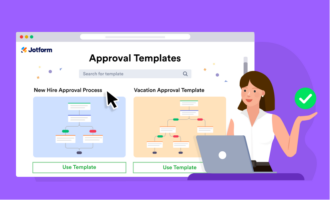Does your human resource department take a reactive approach or a proactive approach to its activities? If you find that HR is always trying to keep up with the demands of your business, it’s likely you aren’t practicing strategic human resource management.
Understanding the fundamentals of strategic human resource management
In strategic human resource management, the goals of HR and the overall goals of the business are in lockstep. This means that all HR activities — whether for recruiting, training, or benefits administration — are fully aligned with the company’s long-term goals.
For example, if the business wants to be a competitive employer that retains top talent, then the strategic human resource management team should develop a comprehensive compensation and benefits plan that exceeds industry standards in order to attract top-performing employees and add value to the business.
Similarly, if the business wants to appeal to an emerging target market, then the strategic human resource management team will recruit new employees with expertise in that area or train existing employees on those specific skills.
Another key to strategic human resource management is its focus on all of the company’s stakeholders — not just employees. This means human resources also engages partners, investors, and even the larger community through various initiatives.
This approach creates additional value for the company because HR impacts both internal and external stakeholders. For example, human resources may facilitate seminars for the community to learn more about the company’s future direction.
In addition, strategic human resource management has an increased focus on data and key performance indicators.
HR makes decisions based on specific metrics, like employee engagement, net promoter scores, customer scores, and more. This allows businesses to make necessary changes to their HR activities to achieve more favorable outcomes for their employees and the business as a whole.
Realizing the benefits of strategic planning
Through careful research and planning, strategic human resource management can fully align with a business’s goals. This provides the organization with a number of important advantages:
- Minimizing poor hiring choices, reducing turnover, and increasing retention
- Maintaining employee focus on business goals, mission, vision, and core values
- Increasing employee productivity and performance at all levels of the organization
- Anticipating market and customer needs and pivoting HR initiatives to respond to them
- Mitigating potential employee issues and managing risk effectively
- Honing employees’ skills and leadership abilities to better serve business goals
Implementing strategic human resource management processes in the workplace
Shifting your business from a reactive approach to a proactive strategic human resource management approach requires focusing on long-term goals and working to achieve the overall vision. Here are four steps to begin implementing strategic human resource management:
- Establish your company’s goals. Begin by fully understanding the company’s long-term goals. For example, do you want to enter new markets, improve profitability, increase revenue, appeal to a new target audience?
- Evaluate the current state of your company. Determine the company’s current position in relation to achieving its long-term goals. What do employees need from HR to reach those goals?
- Align your HR strategy with your company’s goals. For example, should your HR strategy focus on recruiting and hiring employees with specific expertise, or is it more important to offer professional development opportunities to your existing employees?
- Track and monitor your HR activities. Strategic human resource management is an ongoing process that requires careful analysis. Are HR activities helping the company achieve its goals? Is the company on track or off track? How can HR better support the company?
With strategic human resource management, businesses are better positioned to meet long-term targets. When a company proactively aligns HR initiatives with its overall goals, it can offer critical support in the areas where the business needs it.














































Send Comment: